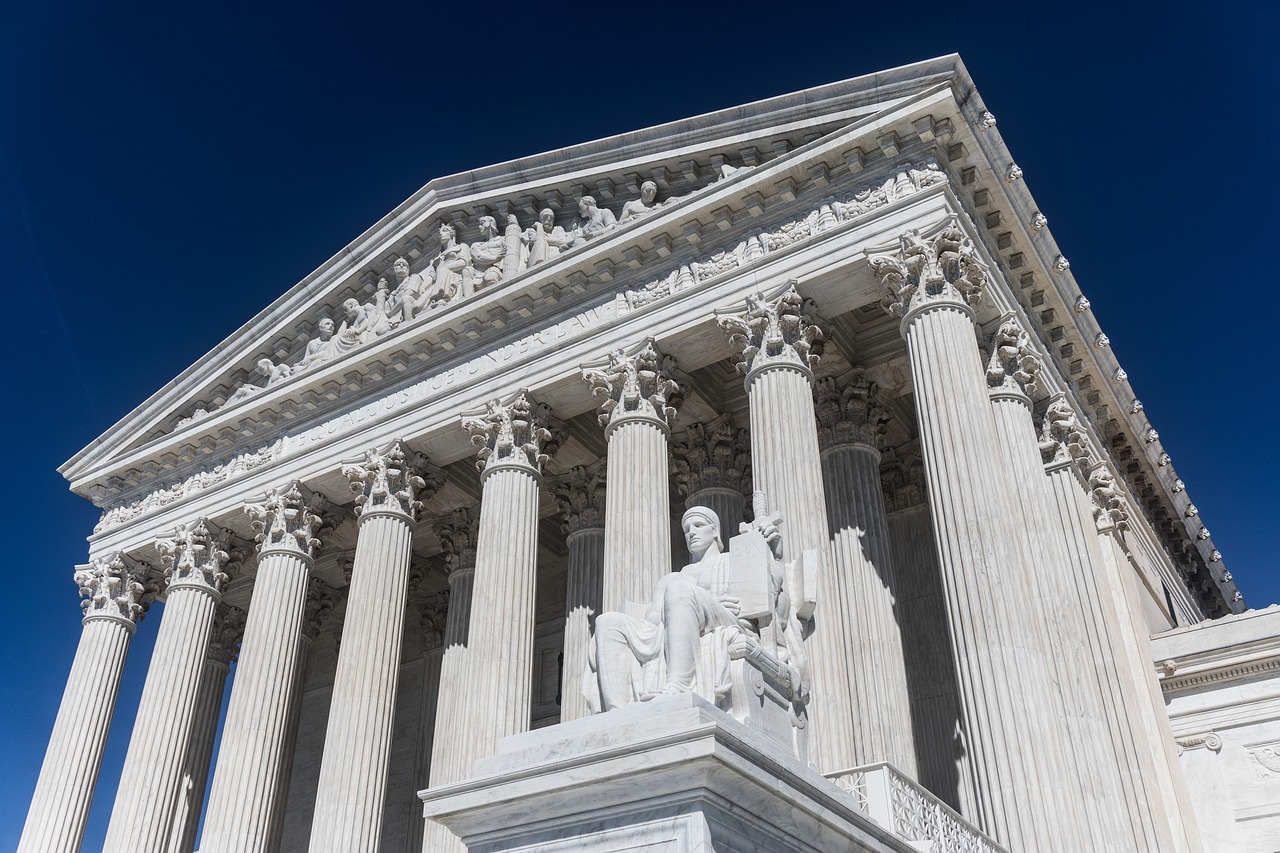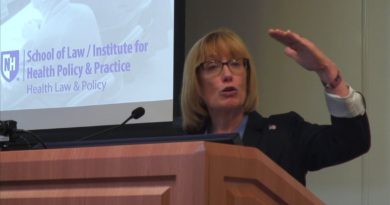Don’t Be Too Alarmed by the New SCOTUS Antibody Ruling
Amgen v. Sanofi is an important case, but it won’t transform patent law on its own.
By Timothy Bonis
Last April, the Supreme Court ruled in Amgen v. Sanofi, a closely watched patent case where the justices upheld the invalidation of two monoclonal antibody patents for lack of enablement. The ruling has attracted significant interest for two reasons.
First, Amgen involved genus claims in biological and chemical fields, which some experts believe the Federal Circuit has made unduly hard to obtain. This viewpoint, most prominently expressed by Mark Lemley, Sean Seymore, and Dmitry Karshtedt in The Death of The Genus Claim (2021), informed much of the debate about Amgen, although it has been challenged by scholars like Christopher Holman.
Second, Amgen dealt with monoclonal antibody patents, which now represent some of the most valuable intellectual property. (The global market for monoclonals in 2022 was $210B.) Moreover, the scope of antibody patent claims has been narrowed markedly by heightened standards for enablement and written description introduced over the past two decades; antibody inventors once received broad protection through functional claims, but the Patent and Trademark Office (PTO) has raised its requirements, partially in response to repeated invalidations of antibody genus claims at the Federal Circuit (see Chiron v. Genentech, 2004, Centocor v. Abbott, 2011, and AbbVie v. Janssen, 2014).
The decision in Amgen continues the trend of narrowing antibody patents and the perceived trend of limiting genus claims. Thus, how impactful Amgen will be on its own remains uncertain. Does it add new constraints to the patentability of antibodies, small molecules, and chemicals, or does it merely recapitulate the Federal Circuit’s previous rulings? This post reviews that debate. Part I examines how scholars and attorneys have reacted to Amgen, focusing on whether they think the case will have a legal and practical impact. Part II synthesizes these perspectives, arguing that Amgen’s direct impact will be limited. A companion piece summarizing the ruling’s significance for the industry and innovation will follow.
Much of the debate about Amgen surrounds how the courts applied the doctrine of “full scope” enablement, which requires that a patentee enable a person having reasonable skill in the art (a “PHOSITA”) to make and use every embodiment in their claimed genus. The Federal Circuit demanded full scope enablement in biological and chemical fields before Amgen (see Wyeth & Cordis Corp. v. Abbott Labs, 2013, and Idenix v. Gilead, 2019), but some experts believe Amgen expanded the requirement.
Attorney Gene Quinn offers the most dramatic interpretation, calling the Supreme Court’s embrace of full scope enablement in Amgen “a cataclysmic shift in the law of enablement,” not just for antibodies but for “the life sciences community and beyond.” Quinn focuses on the facts of the patent rather than the recent precedent for full scope enablement. He believes that “there is…no question that Amgen invented the full scope of what they claimed,” accepts Amgen’s estimate of its genus’s size (300–500 embodiments), and calls the disclosure “extraordinary.” Because Quinn thinks Amgen’s disclosure was so complete, he argues that post-Amgen, the law must implicitly require patentees to explain each claimed embodiment, an extreme and novel interpretation of the full scope standard.
In their 2023 article The Antibody Patent Paradox, Jake Sherkow and Mark Lemley (an author of Death) call Amgen a “revolution,” but they do not forecast as far-reaching an impact as Gene Quinn. Although they argue that full scope enablement is a relatively novel requirement, they recognize that it had been imposed before Amgen, including to antibodies (see p. 1030–31). Still, they do think Amgen represents a shift; they believe that it will extend the Federal Circuit’s long-term “reorientation” of the Wands factors for undue experimentation by requiring patentees to explain how to distinguish working embodiments from nonworking embodiments and make the absolute size of a genus a more important factor in claim viability (see p. 1034). They also emphasize how the Amgen panel’s interpretation of full scope enablement will limit functional claims, especially in antibody patents: “Post-Amgen…no robust specification could possibly encompass all possible examples of functionally claimed antibodies.”
On the other hand, Christopher Holman has criticized the perspective that full scope enablement is a novel requirement or one that Amgen has impacted. His article Is the Chemical Genus Claim Really “Dead” at the Federal Circuit? repudiates Death and Paradox’s suggestion that the Federal Circuit has redefined “undue experimentation” since the 1980s. In a blog post about Amgen, Holman writes that full scope enablement has “been the Federal Circuit’s interpretation of the enablement requirement [for years].” Holman disagrees with Quinn’s reading of the ruling: “A patentee is not required to literally enable a person of skill in the art to make and use every embodiment… I do not think that anything in Amgen should be interpreted as altering this fundamental understanding of the enablement requirement.”
Attorney Dominic Frisina has expressed even stronger criticism towards the notion that the full scope enablement is new or something Amgen has changed:
The “new” rule adopted by the Supreme Court in Amgen is the same “full scope” requirement we have lived with for decades under Federal Circuit law. That is, patentees must enable the full scope of their claimed invention, or else the claims are invalid.
Frisina agrees with the courts. Justice Gorsuch’s opinion labels “[the requirement that] “the specification must enable the full scope of the invention as defined by its claims” a “simple statutory command.” When Amgen asked for an en banc rehearing at the Federal Circuit, Judge Lourie wrote an unusual concurrence to the court’s denial of the rehearing, saying Amgen did not change the law. Presumably responding to Death, the concurrence calls “[those] bemoaning the so-called death of generic claims off base.”
What is a reasonable synthesis of these different perspectives? Amgen’s significance has often been overstated. It did not introduce unprecedented enablement principles, and, in practice, biotechnology genus claims, including antibody claims, were already limited.
The first issue is the disclosure itself. Gene Quinn argues that Amgen’s disclosure was narrow and reproducible, but his fact-finding is flawed. He trusts Amgen at face value, accepting that the genus numbered 300–500 and that “skilled artisans following the patent’s ‘roadmap’ [which is how Amgen tried to enable its patent] ‘would be certain to make all’ the antibodies across the claims” (he quotes Amgen’s expert). He calls Amgen’s testimony “uncontroverted.” This interpretation appears incomplete. Amgen’s counsel admitted the genus ranged in “the potential millions” during oral arguments. Furthermore, the courts heard experts from both sides, and the district court specifically concluded that the roadmap “does not provide significant guidance or direction.” The courts may have been wrong about the facts, but even if that were the case, they still invalidated a patent with a claim that seemed vast and a disclosure that seemed limited.
The second question is whether the way courts ruled on the disclosure was new to Amgen. Probably not. As most experts recognize, full scope enablement has robust pre-Amgen precedent. Justice Gorsuch’s opinion invokes ancient rulings like Morse (a dispute over the telegraph patent), but cases like Wyeth (2011) offer recent and unambiguous examples of Amgen-style full scope enablement, albeit for small molecules, not antibodies. Even more directly, in MorphoSys v. Janssen Biotech (2019), an antibody patent invalidation from the same district as Amgen, the district court not only embraced full scope enablement (see § B pt. 2), but also handled functional claims and undue experimentation similarly to the courts in Amgen, all without relying on Amgen. The circumstances were similar, although MorphoSys supplied fewer working examples than Amgen. The district court highlighted that the functional limitations in MorphoSys’s patent led to its overbreadth; the opinion stressed that, even though some non-disclosed antibodies were reproducible, “where, as here, the claims recite functional limitations in an unpredictable field, the specification must do more than place [a PHOSITA] at ‘a starting point.’” This stance resembles the Federal Circuit in Amgen: “This invention is in unpredictable field of science with respect to satisfying the full scope of the functional limitations…the binding [i.e., functional] limitation is itself enough here to require undue experimentation.”
The other reason Amgen will not transform the patentability of new biotechnologies, including antibodies, is that the scope of antibody and other biotechnology genus claims was already narrow. First, looking at chemical and biological patents in general, it is hard to argue that Amgen requires anything more stringent than non-antibody pharmaceutical cases from the 2010s. Wyeth and Idenix demand full scope enablement, and structural details have been necessary in life science genus claims (except antibody claims) since the 1990s. Indeed, in Death, which was written before Amgen, Lemley concludes that “any genus claim…in the life sciences and chemical fields” has been “call[ed] into question.” Of course, Lemley might be wrong (and Holman might be right) about whether that is true, but the point is the requirements for patenting chemicals and small molecules had already reached or surpassed Amgen’s standards before Amgen.
The other possibility is that Amgen will only affect the patentability of antibodies, which long received more lenient treatment than other biotechnologies. This seems to be Lemley and Sherkow’s position in Paradox, where they characterize Amgen as “revolutionary” (as opposed to “confirmatory,” as they did in a more general amicus brief submitted to the Supreme Court) but a revolution for “functional antibody patents.” The problem with this interpretation is that the Federal Circuit narrowed antibody claims so substantially before Amgen. Consider how much the holdings in AbbVie v. Janssen (2014) restrict antibody genus claims; AbbVie disclosed twelve times more antibody sequences than Amgen, yet still lost. Even in 2012, one review concluded that functional antibody claims “rely on tenuous Federal Circuit precedent.”
The empirical reality is that functional antibody claims were not that patentable before Amgen. A study by Sean Tu and Christopher Holman revealed that examiners increasingly threw out antibody claims for § 112 failures during the lifespan of PTO’s “antibody exception.” (The “antibody exception” allowed functional claims for antibodies but no other biotechnologies. It was formally repealed in 2018.) According to their research, the exception was “largely ignored” by 2008. Drafting practices changed to accommodate this shift; 70% of approved antibody patents used functional limitations (the antigen or binding site) in the early 2000s, but that number fell to almost zero by 2011, long before Amgen. In sum, examiners and the Federal Circuit have been hostile to broad antibody patents for too long for Amgen to transform the patentability of monoclonal antibodies.






